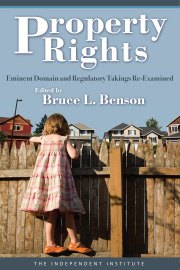Reports claiming that inclusionary zoning will provide more affordable housing in California are seriously misleading. Inclusionary zoning seeks to make housing affordable by placing price controls on a percentage of new homes. Despite their popularity, affordable housing mandates produce few affordable units, they restrict the supply of new homes, and they actually make housing less affordable.
Advocates of inclusionary zoning often measure “success” by the number of jurisdictions that have an ordinance. The number of California cities with affordable housing mandates expanded from none in 1972 to 116 today. But to measure success we must look at whether housing is more affordable, not simply whether ordinances are adopted.
Under most inclusionary ordinances, builders must sell 10 to 25 percent of the homes to very low, low, or moderate income households. The most obvious result is revenue from building goes down. We conducted a study and found that in the median city in the San Francisco Bay Area, builders must forgo $345,000 in revenue for each below-market unit. In one quarter of jurisdictions builders must forego more than $500,000 in revenue for each below market rate unit. Governments do not pay for the cost of producing the price-controlled units, so inclusionary zoning works like a tax on builders. The size of the inclusionary tax is quite substantial.
Unfortunately builders do not just passively accept lower profits. They build fewer homes and raise prices on remaining market-rate homes. The cost of the affordable units is spread among the remaining market-rate units. That makes all other homes less affordable. In the median Bay Area city, inclusionary zoning imposes an effective tax on each market-rate home of $44,000. In cities such as Cupertino, Los Altos, Palo Alto, Portola Valley, and Tiburon, we estimate that inclusionary zoning adds more than $100,000 to the price of each new home.
Inclusionary zoning also causes fewer new homes to be built. In the 45 Bay Area jurisdictions that passed inclusionary zoning between 1973 and 2001, the year following the adoption of inclusionary zoning new construction decreased an average of 31 percent. Over longer periods the results are similar. For the 33 cities with data available, in the 7 years after the adoption of inclusionary zoning, 10,662 fewer homes were produced than in the 7 years prior to the adoption of ordinances.
Inclusionary zoning also fails to produce significant numbers of affordable units. In the entire Bay Area over 30 years, inclusionary zoning has led to only 6,836 below market units. The decrease in housing production due to inclusionary zoning far outweighs the “increase” in price controlled homes. The average city has produced fewer than 15 affordable units per year since passing an inclusionary ordinance. Comparing inclusionary zoning’s output to the Association of Bay Area Governments’ projected affordable housing need, makes the failure of inclusionary zoning unambiguous. If inclusionary zoning continues at its current pace, it will take 100 years for inclusionary zoning to meet the region’s current five-year housing need.
The intent of inclusionary zoning is to make housing more affordable. Inclusionary zoning produces the opposite effect. Fewer homes are built and prices are higher for the vast majority of homebuyers.
Inclusionary zoning remains popular as a window dressing that makes cities appear to favor affordable housing. But for those advocates who really care about helping low income families, the lesson from the Bay Area is clear. Price controls are perhaps the worst way of encouraging more affordable housing.














